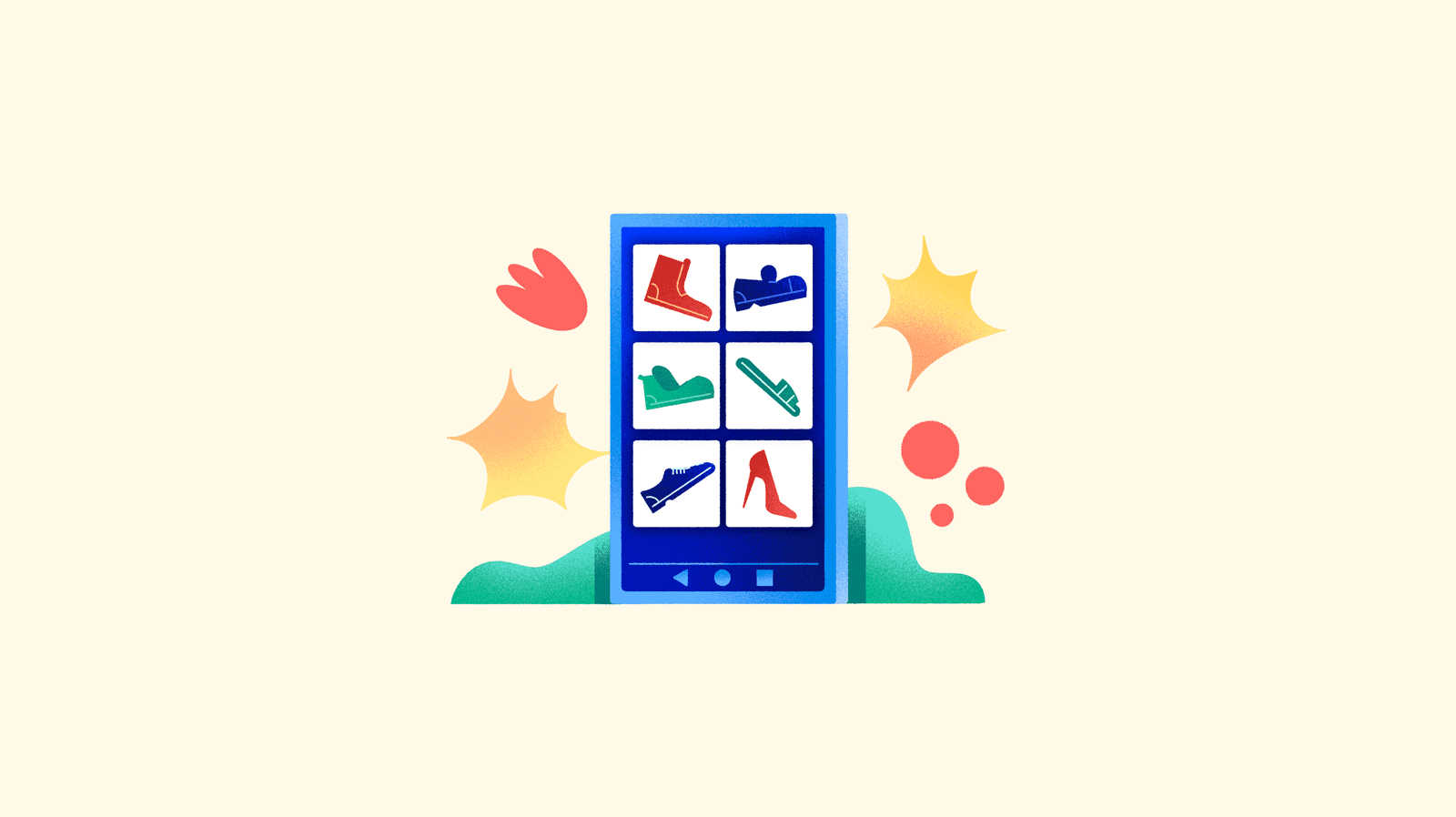
Setting up a digital shoe catalog doesn’t have to be a challenge.
The key to a successful ecommerce shoe catalog in this increasingly digitized landscape? Preparing your catalog so it works across all channels, online and offline, and quickly adjusts to changes in customer demand, trends and seasons.
Everything an ecommerce footwear catalog should include
Structure and categories
Navigating a shoe catalog should be quick and intuitive for any buyer. This is a product that customers search for with a clear idea in mind, so they expect to find the categories and filters that narrow down their search as quickly as possible.
If the manufacturer or retailer offers shoes for multiple target consumers, they should be clearly differentiated across the site. Example categories are:
- Women’s
- Men’s
- Children’s
- Baby’s
Within these categories, variants must be clearly labeled to be able to locate them by choosing the type (sports, formal, summer or winter...), height and sole, color, material and size.
The final volume of this information can be massive, which is why it is essential to have a well-structured catalog with a platform such as PIM (Product Information Management).
A PIM system centralizes all product content and makes it easy to edit, update and connect it with any sales channel. At Sales Layer, we know first-hand how much this technology helps the footwear sector: Bobux uses our PIM to improve the international digital experience of its customers.

Images
In the fashion sector, the product photography is the star of the show. Buyers expect to see detailed photography to compensate for not seeing the product in person. When it comes to shoes, they want to be sure of:
- Type of laces or fastenings
- Heel height
- Lining and inner sole
The more detailed the product images in a shoe catalog are, the more likely a customer will be to make a purchase. Moreover, the number of returns is reduced, as they will have been able to get a reliable idea of what the product is like.
In this example of a Bobux product page, they include several views of the shoe from various angles, as well as thumbnails of all the available colors.
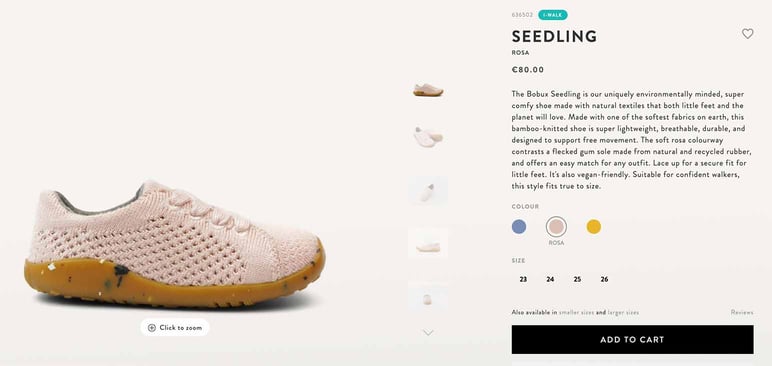
Sizing
The biggest enemy of online shoe sales is sizing. Although shoe sizes rarely change once you reach adulthood, there are often slight differences in sizing from one brand to another and this can make online shopping difficult.
Many customers are reluctant to buy shoes online because they are concerned they will be uncomfortable or won’t fit properly. To reduce this problem (accepting that it will always be there for a percentage of buyers), you can offer an easy exchange and return system for the customer, and have a detailed size chart.
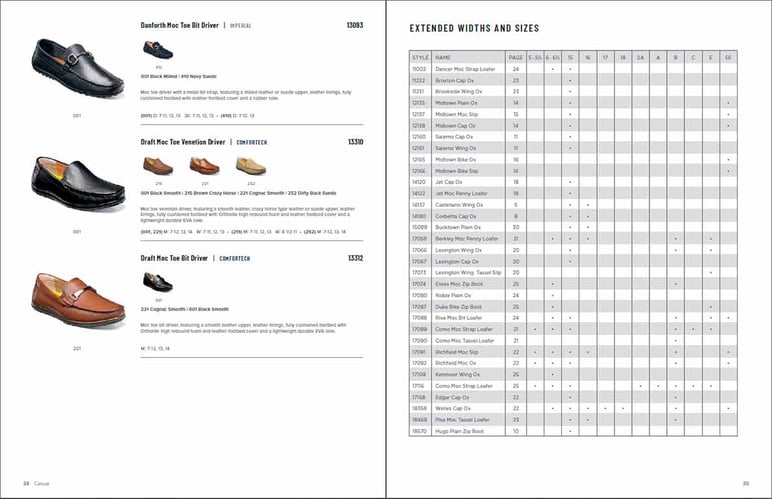
This means more than just detailing what sizes are available for each model. It should be a table that is easy to consult and understand, linked in all the product sheets, with the exact measurements for each size and category.
In the future, virtual and augmented reality may be able to help with this issue, but for now, a size chart is the most effective tool to implement in your footwear catalog.
Multi-language content
Digital sales are making it easier for brands to access other markets, and for customers to access products from all over the world. Even if you currently only offer your catalog in one language and region, it’s important to be prepared for potential international expansion.
Having a PIM makes it easy to manage and translate product information into any language, which is ideal for launching new versions of a website, sending content to a foreign marketplace or preparing international catalogs.
Bobux chose Sales Layer to improve its brand's digital presence around the world and now has updated shoe content in all versions of its online catalog.
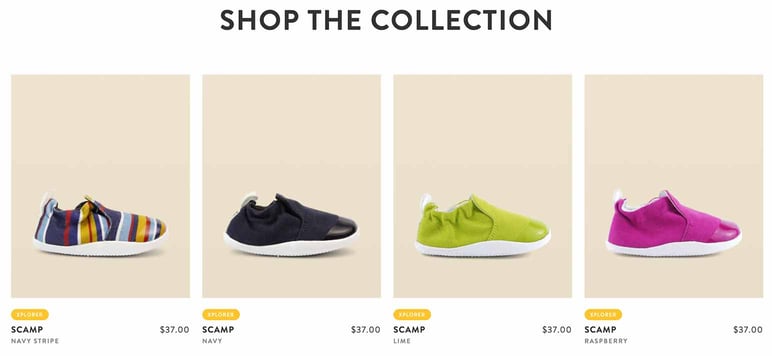
Care information
Over recent years, there is a push amongst consumers to care for and reuse products as much as possible, reducing waste and slowing the fast fashion cycle.
Both for this reason and because durable products are more highly valued by customers, you should include information on specific care for each model on your product sheets, such as on the Camper website:
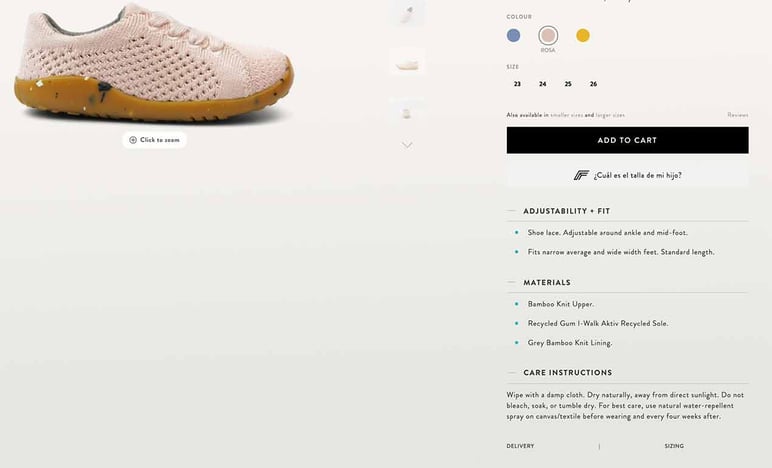
Offering useful advice to the buyer that is catered to each shoe reaffirms confidence in the brand.
If they don't find this kind of data in an online catalog, they will go to other channels in search of more complete information and, most likely, will not return to your website.
Environmental consciousness is becoming a key requirement for many shoppers when choosing an online retailer. These consumers are looking directly for footwear made from sustainable materials, in fair and environmentally friendly conditions. In this sense, it is important to work on the keywords for the SEO of this category of footwear and highlight quality seals, certifications and commitments, as Bobux does.

Lookbook
Many ecommerce shoe catalogs show high-quality photos in the product cards, but it’s impossible to tell how those shoes look on a real person.
Adding a shoe lookbook allows customers to see the products ‘in action’. A popular trend across ecommerce sites in recent years is to allow consumers to upload photos of them wearing the product to a lookbook gallery that other potential customers can view.
Here you can see some spring lookbook samples from shoe brand Florsheim:

These materials are a great marketing tool, so take advantage of the images in brochures, catalogs, and promotional and social media actions.
For your online footwear catalog to stand out amongst competitors, the key is to have all the content clear and accessible, up-to-date and ready to use.
Get it in no time with a PIM, the fastest way to centralize a product catalog for manufacturers and retailers. Get started with a free trial of Sales Layer.





.jpg)
-1.webp?width=520&name=formulas-excel-gestion-inventario%20(1)-1.webp)



